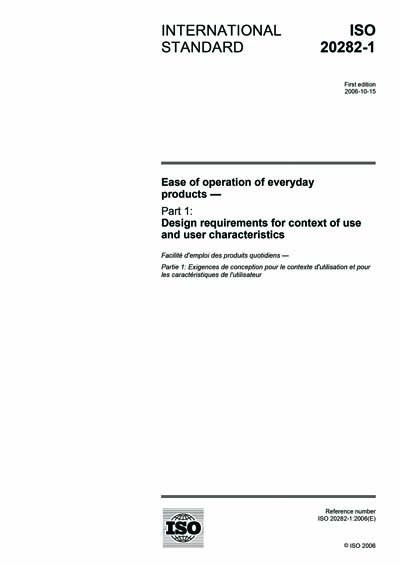Most recent
ISO 20282-1:2006
Ease of operation of everyday products - Part 1: Design requirements for context of use and user characteristics
ISO 20282-1:2006 provides requirements and recommendations for the design of easy-to-operate everyday products, where ease of operation addresses a subset of the concept of usability concerned with the user interface by taking account of the relevant user characteristics and the context of use.
ISO 20282-1:2006 is intended to be used in the development of everyday products, for which it defines ease of operation, explains which aspects of the context of use are relevant, and describes the characteristics of the intended user population that may influence usability.
The intended users of this part of ISO 20282-1:2006 are usability specialists, ergonomists, product designers, interaction designers, product manufacturers and others involved in the design and development of everyday products.
ISO 20282-1:2006 is applicable to mechanical and/or electrical products with an interface that a user can operate directly or remotely to gain access to the functions provided. These products fall into at least one of the following categories: consumer products intended for some or all of the general public which are bought, rented or used, and which may be owned by individuals, public organizations, or private companies; consumer products intended to be acquired and used by an individual for personal rather than professional use (e.g. alarm clocks, electric kettles, telephones, electric drills); walk-up-and-use products that provide a service to the general public (such as ticket-vending machines, photocopying machines, fitness equipment); products used in a work environment, but not as part of professional activities (e.g. a coffee machine in an office); products including software that supports the main goals of use of the product (e.g. a CD player).
This part of ISO 20282 is not applicable to the following: purely physical products without an interactive user interface (such as a jug or a hammer); products where appearance or fashion is the main goal (such as a watch with no markings); products requiring specialist training, specific skills and/or professional knowledge (such as a musical instrument or a car); standalone software products; products intended to be used for professional activities only.
Content Provider
International Organization for Standardization [iso]






